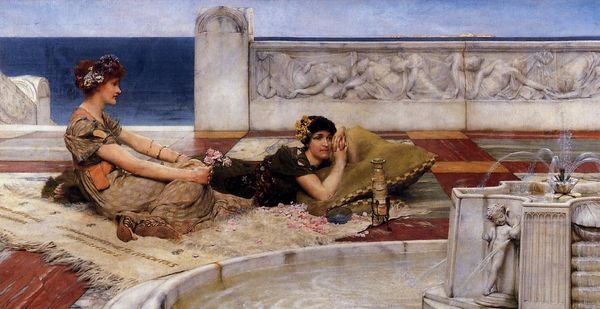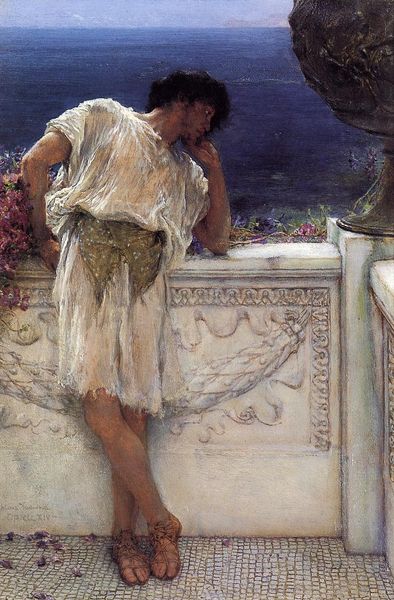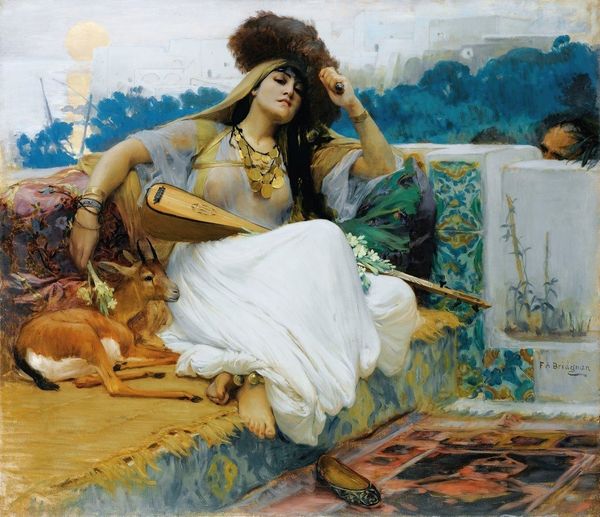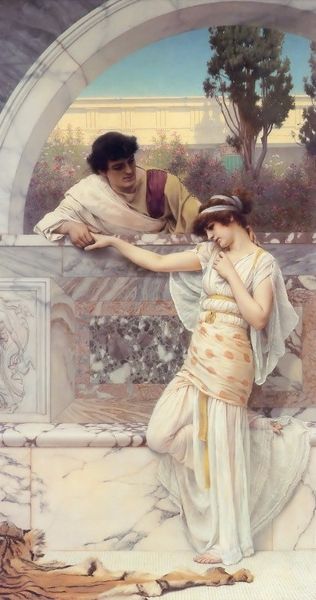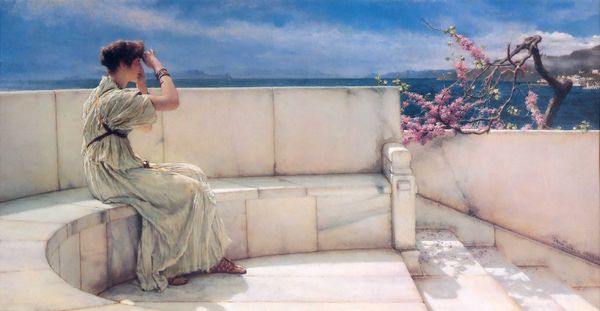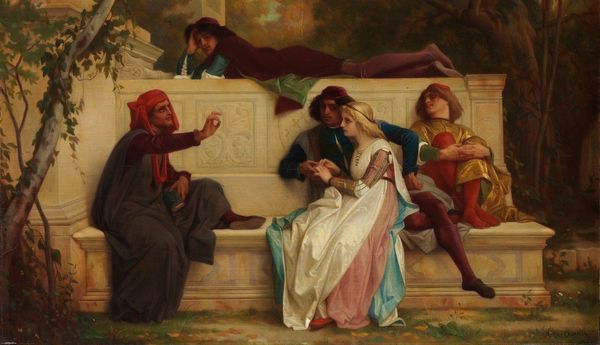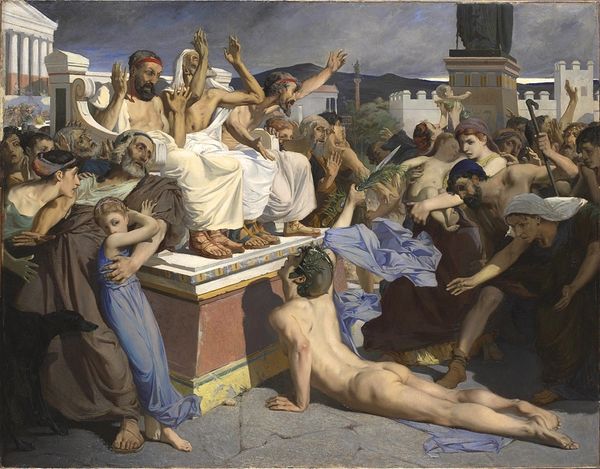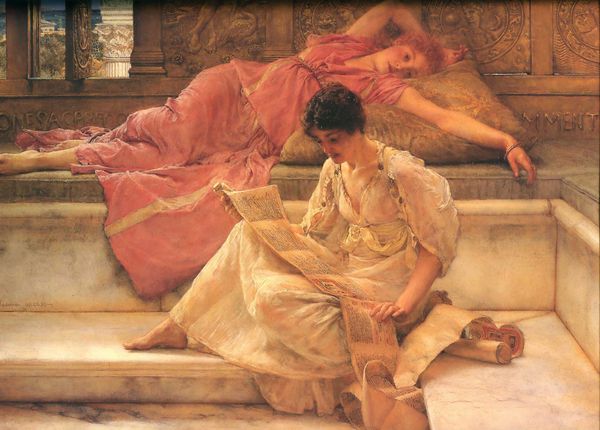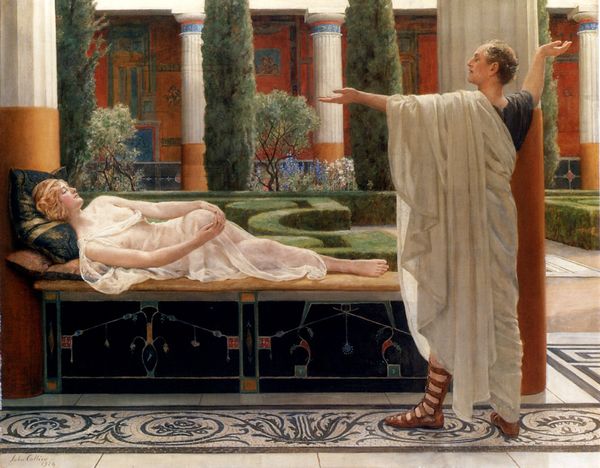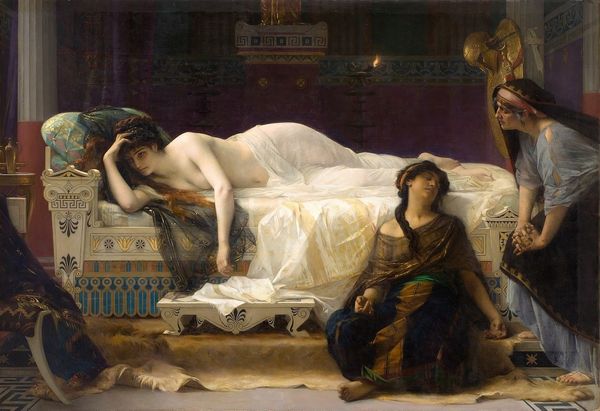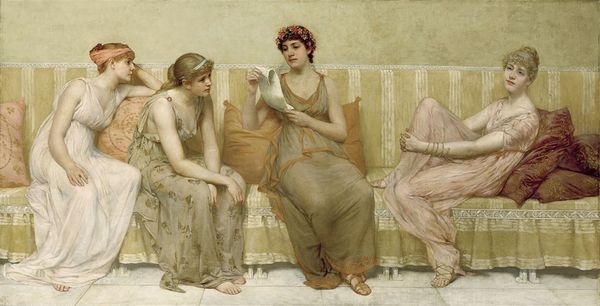
Copyright: Public Domain: Artvee
Editor: Lawrence Alma-Tadema's "A Reading from Homer," painted in 1885, is remarkably evocative. The details of the marble and the figures create an intimate atmosphere of leisure and learning, a perfect escape to ancient times, I feel. What layers do you see within this painting? Curator: Oh, escape is right. Isn't it scrumptious? This painting invites us to eavesdrop on a private moment, but it's a performance too. Alma-Tadema loved staging these little theater pieces. He uses every prop, every costume, every sun-drenched detail to conjure not just a historical setting, but a mood – one of rapt attention, relaxed pleasure, a sense of basking in the glow of beauty and wisdom. I see the idealized world of classical antiquity – the blue sky, serene setting… But tell me, what's your sense of the figures themselves? Who seems most engaged and who perhaps not so much? Editor: I think the figure at the bottom is the most engaged, maybe he is one of the unsung people of this painting, while the people lounging in the middle appear somewhat distracted. Curator: Precisely! Now, that tension - engagement and disengagement - is exactly where the spark is, wouldn't you agree? He's pulled in by Homer's epic world, utterly mesmerized. And you, my dear friend, are doing exactly that right now, as we speak. Do you think art and real life may influence each other and play a fundamental role here? Editor: Yes! Now that I think about it, I also feel transported by his artwork to that idyllic scenery. I learned to appreciate art not as a mere reproduction, but as an expressive portal into shared human sentiments. Thank you so much for this reading! Curator: The pleasure was entirely mine! Just remember, all great art asks a question. Sometimes the real masterpiece is the dialogue it sparks.
Comments
No comments
Be the first to comment and join the conversation on the ultimate creative platform.
